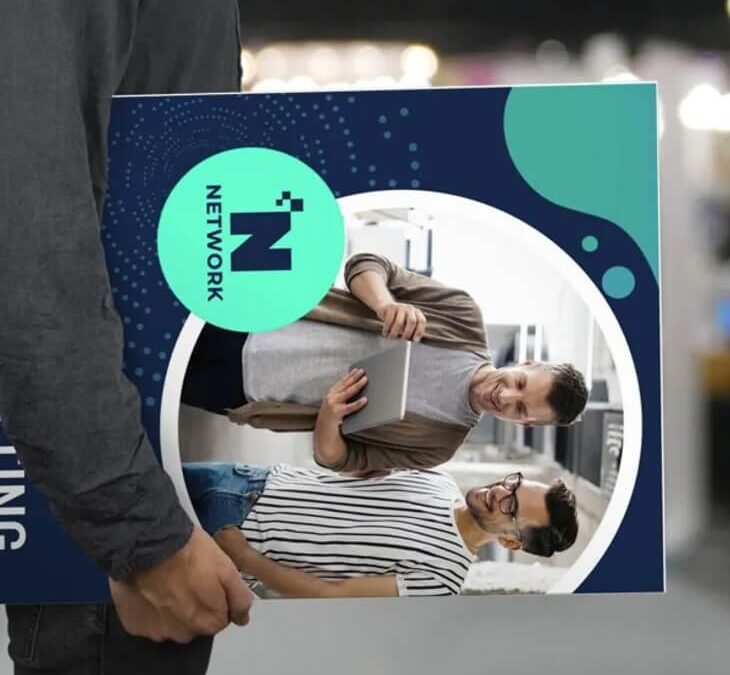Exhibition graphics are an essential element in creating engaging, informative, and visually appealing displays at trade shows, exhibitions, and other events. They play a critical role in communicating your brand message, attracting attendees, and leaving a lasting impression. Effective exhibition graphics combine creativity, clarity, and functionality, ensuring your booth or exhibit stands out in a competitive environment.
This article explores the importance of exhibition graphics, design tips, material options, and how they contribute to a successful event presence.
What Are Exhibition Graphics?
Exhibition graphics refer to the visual components used in exhibition stands or trade show booths. These graphics often include:
- Banners and Posters: Used to display key messages, logos, and images.
- Wall Panels: Large-scale visuals that cover booth walls to create an immersive environment.
- Pop-Up Displays: Portable and easy-to-assemble graphics for showcasing products or services.
- Signage: Directional or informational signs that guide visitors.
- Digital Displays: Screens or monitors with dynamic content, such as videos or animations.
Exhibition graphics serve both functional and aesthetic purposes. They convey your message effectively while enhancing the overall design and atmosphere of your booth.
Importance of Exhibition Graphics
1. Grab Attention
In crowded exhibition halls, bold and eye-catching graphics help your booth stand out and attract visitors.
2. Communicate Your Brand
Graphics are a visual representation of your brand identity. Consistent use of colors, fonts, and imagery reinforces brand recognition.
3. Simplify Information
Well-designed graphics can communicate complex ideas or product benefits quickly, appealing to busy attendees.
4. Create an Experience
Immersive and visually appealing graphics enhance the visitor experience, making your booth memorable.
5. Support Sales Goals
Clear and compelling graphics can guide potential customers through your value proposition, encouraging conversions and lead generation.
Key Elements of Effective Exhibition Graphics
To ensure your exhibition graphics are impactful, consider the following elements:
1. Clarity and Simplicity
- Keep your design clean and uncluttered.
- Use concise text and bold visuals to convey your message at a glance.
2. Consistent Branding
- Use your brand’s colors, logo, and typography consistently.
- Ensure all graphics align with your overall marketing strategy.
3. High-Quality Visuals
- Use high-resolution images and graphics to ensure a professional look.
- Avoid pixelation or blurry visuals that can undermine credibility.
4. Strategic Placement
- Position key messages and visuals at eye level for maximum visibility.
- Use the height and width of your booth effectively to draw attention.
5. Readability
- Choose legible fonts and ensure adequate contrast between text and background.
- Use a hierarchy of information to guide the viewer’s eye.
6. Interactive Elements
- Incorporate QR codes, touch screens, or AR/VR features to engage visitors.
Types of Exhibition Graphics
Depending on the size, purpose, and format of your exhibition, you can choose from various graphic solutions:
1. Portable Displays
- Lightweight and easy to transport, such as banner stands or pop-up displays.
- Ideal for smaller booths or traveling exhibitions.
2. Modular Graphics
- Customizable panels or frames that can be rearranged for different events.
- Suitable for businesses requiring flexible setups.
3. Large-Format Graphics
- High-impact visuals, such as wall panels or floor-to-ceiling banners.
- Great for creating immersive brand experiences.
4. Digital Graphics
- Screens or LED walls displaying animated content or product demos.
- Offers dynamic engagement and flexibility for updates.
5. 3D Graphics
- Dimensional elements, such as sculpted signage or backlit displays.
- Adds depth and enhances visual appeal.
Materials for Exhibition Graphics
The choice of materials affects the durability, appearance, and cost of your graphics. Common options include:
- Vinyl: Durable and versatile for banners, wall graphics, and floor decals.
- Fabric: Lightweight and easy to transport, often used for backdrops or hanging signs.
- Foam Board: Ideal for rigid displays and temporary signage.
- Acrylic: Used for high-end displays and signage, offering a sleek and polished look.
- LED Screens: Perfect for digital and interactive content.
Tips for Designing Effective Exhibition Graphics
1. Know Your Audience
- Understand the preferences and needs of your target attendees.
- Tailor your graphics to their interests and expectations.
2. Focus on Key Messages
- Highlight the most important information, such as product benefits or contact details.
- Avoid overwhelming viewers with excessive text or images.
3. Plan for Scalability
- Design graphics that can be resized or repurposed for different booths and layouts.
4. Test Before Printing
- Review digital proofs to ensure accuracy in colors, layout, and resolution.
- Check measurements to avoid sizing issues during installation.
5. Integrate Lighting
- Use LED lights or spotlights to enhance visibility and create ambiance.
Future Trends in Exhibition Graphics
The field of exhibition graphics continues to evolve, driven by advancements in technology and changing attendee expectations. Emerging trends include:
- Sustainable Materials: Eco-friendly substrates and printing processes to reduce environmental impact.
- Augmented Reality (AR): Interactive AR graphics that provide immersive product demonstrations.
- Minimalist Design: Clean and modern aesthetics that focus on essential information.
- Customizable Content: Digital displays that allow for on-the-spot updates and personalization.
- Integrated Technology: Touchscreens and IoT devices for seamless engagement.
Conclusion
Exhibition graphics are a powerful tool for making a lasting impact at trade shows and events. By combining thoughtful design, high-quality materials, and strategic placement, you can effectively communicate your brand message and engage attendees.
Investing in professional, eye-catching graphics ensures your booth stands out, leaving a memorable impression and achieving your event goals. Whether you’re launching a product, building brand awareness, or connecting with industry peers, the right graphics can elevate your exhibition success.
